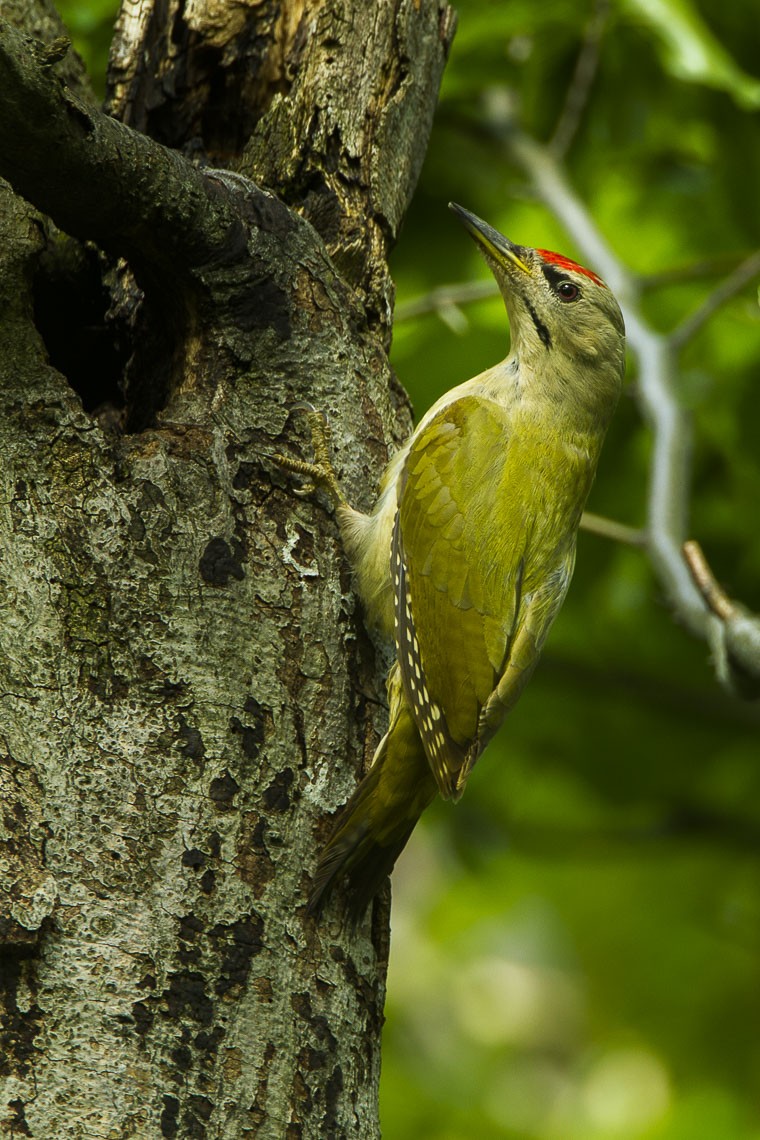Grey-headed Woodpecker
A species of Eurasian Green Woodpeckers and Allies, Also known as Gray-faced Woodpecker Scientific name : Picus canus Genus : Eurasian Green Woodpeckers and Allies
Grey-headed Woodpecker, A species of Eurasian Green Woodpeckers and Allies
Also known as:
Gray-faced Woodpecker
Botanical name: Picus canus
Genus: Eurasian Green Woodpeckers and Allies
Content
Description General Info
 Photo By Francesco Veronesi , used under CC-BY-SA-2.0 /Cropped and compressed from original
Photo By Francesco Veronesi , used under CC-BY-SA-2.0 /Cropped and compressed from original Description
The grey-headed woodpecker is 25–26 cm (9.8–10.2 in) in length, has a wingspan of 38–40 cm (15–16 in) and weighs around 125 g (4.4 oz). The male of the nominate subspecies has a grey head with a red forecrown. There is a black line across the lores and a narrow black moustache stripe. The back, scapulars and wing coverts are green. The breast and underbody are pale grey. The folded primaries are barred brown-black on grey-white. The female lacks the red forecrown but has fine black streaks on the crown. The widely distributed Picus canus jessoensis is very similar to the nominate subspecies but is slightly greyer and less green. The Chinese subspecies Picus canus guerini has a black nape patch and a greenish underbody. The subspecies Picus canus hessei is similar to guerini but is more golden green above and a deeper green below. The race on the island of Sumatra, Picus canus dedemi, differs markedly from the other subspecies in having reddish rather than green above, and red, green and grey below. It has a black crown and nape. Specimens of the more widespread of the two Eastern subspecies, P. c. jessoensis, are usually a little larger and heavier than individuals from the type locality. On average, it is somewhat smaller and lighter than the European green woodpecker. In the field, this distinction in size is difficult to make. Its size is approximately that of a Eurasian collared dove. Grey-headed woodpeckers have uniformly olive green upperparts, transitioning across the neck to a light grey, the head being that latter colour. The typical woodpecker markings are small and not particularly conspicuous. It has a grey head with black moustache, and the male has a red crown. It has a shorter neck, slimmer bill and slightly rounder head than the green woodpecker. 
Size
33 cm
Colors
Green
Yellow
Gray
Life Expectancy
6 years
Nest Placement
Cavity
Feeding Habits
Grey-headed Woodpecker primarily feeds on ants and their larvae, especially in spring and summer, utilizing a foraging strategy that is less specialized than some woodpeckers but allows coexistence with similar species. Their diet also includes other insects and, during late autumn and early winter, they shift to eating berries and fruits.
Habitat
Grey-headed Woodpecker favors a mix of deciduous or coniferous woodlands, typically inhabiting open country with trees, parks, and montane forests. Preferring forest interiors in lowland and hilly terrains, this bird is found across diverse habitats in Europe and Asia, adapting from sea level to 2600 meters in elevation. It avoids dense coniferous taiga and is less common in dense forest edges.
Dite type
Insectivorous
General Info
Feeding Habits
Bird food type
Distribution Area
The grey-headed woodpecker is found in wide parts of Central, Northern and Eastern Europe, as well as a wide belt south of the boreal coniferous forests across Asia all the way to the Pacific coast, Sakhalin and Hokkaidō. Its northern limit is at the border between closed coniferous and mixed forest; the southern limit is where tree steppe transitions to treeless shrubby steppe. In East Asia, the species is most differentiated, and south of Manchuria covers the Korean Peninsula, as well as large parts of eastern China and Farther India, the mountain forests of the Malay Peninsula. In Europe, the type subspecies breeds within a wide belt from western France to the Urals. It has settled medium latitudes of Scandinavia as well as Central, Eastern and Southern Europe. There is contradictory information regarding its occurrence in Turkey. Most likely, several hundred pairs breed in Mittelgebirge habitats of the Pontic Mountains. The species is absent from the North German Plain, British Isles, Iberian Peninsula, and Mediterranean islands. In Italy, it is confined to the northernmost parts. 
Species Status
The grey-headed woodpecker is difficult to record, as isolated breeding pairs don't often call. These are therefore easily overlooked, and population records have corresponding gaps. It is probable that European populations, especially at the north-western margin of the range, have receded in numbers and distribution. Since the 1990s, populations seem to be recovering as a result of mild winters. Globally, there is a slight reduction in population numbers, but insufficiently so for an elevated threat status. The species is therefore considered safe. The observation of stable or slightly increasing populations in Europe may, however, be based solely on greater effort in recording the species. The overall European population is estimated at 180,000 to 320,000 breeding pairs. Key populations are found in European parts of Russia as well as Romania. Germany has around 15,000 pairs, Austria approximately 2,500 and Switzerland some 1,500. There are no summary figures for populations outside Europe. As the grey-headed woodpecker prefers undisturbed and ancient forests with natural cohort structure as well as riparian forests for breeding, the destruction of such habitat is the greatest threat to the species. 